India, a land of vibrant history and cultural diversity, is home to some of the world’s most iconic landmarks, ancient monuments, and breathtaking natural landscapes. These places capture the essence of India’s rich heritage, each telling its own story.
ADVERTISEMENT

Table of Contents
Top 10 Places in India
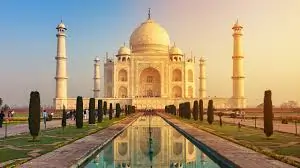
Taj Mahal (Agra, Uttar Pradesh)
Known worldwide as an architectural masterpiece and one of the New Seven Wonders of the World, the Taj Mahal is a symbol of eternal love. Built in the 17th century by Mughal Emperor Shah Jahan in memory of his beloved wife Mumtaz Mahal, this exquisite white marble mausoleum combines elements of Persian, Islamic, and Indian architecture. The intricate inlay work and symmetry reflect the zenith of Mughal craftsmanship, attracting millions of visitors who come to admire its beauty at sunrise and sunset when it glows with soft hues.
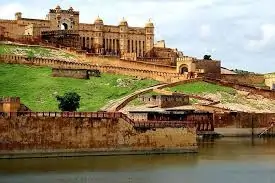
Amer Fort and City Palace (Jaipur, Rajasthan)
Situated on a hill overlooking Maota Lake, the Amer (or Amber) Fort is a blend of Hindu and Mughal architectural styles, known for its elaborate mirror work, intricate frescoes, and expansive courtyards. Nearby, Jaipur’s City Palace, with its lavish courtyards, gardens, and museums, showcases the opulence of Rajasthan’s royal history. Together, these structures highlight the splendor of Rajputana heritage and attract history buffs, photographers, and culture enthusiasts alike.
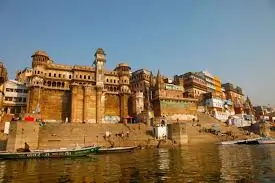
Varanasi Ghats (Uttar Pradesh)
Considered one of the oldest living cities in the world, Varanasi, located along the sacred Ganges River, is a center of spirituality and pilgrimage for Hindus. The ghats, or riverfront steps, especially the Dasaswamedh and Manikarnika ghats, come alive with daily rituals, prayers, and mesmerizing aarti ceremonies at sunset. The city’s chaotic yet peaceful vibe, with temples, narrow alleyways, and the continuous ringing of bells, offers an immersive experience of India’s spiritual heart.
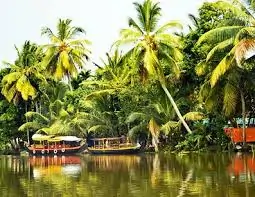
Kerala Backwaters
The Kerala backwaters, a network of interconnected canals, rivers, and lagoons along the coast of the Arabian Sea, are known for their scenic beauty and lush landscapes. Houseboat tours along the backwaters provide travelers with a unique experience, passing through tranquil waters lined with coconut trees and traditional villages. This serene setting, along with Kerala’s rich biodiversity and local culture, makes it a top destination for nature lovers and those seeking relaxation.
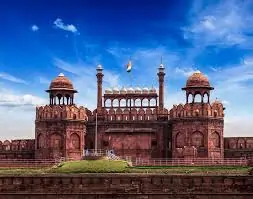
Red Fort (Delhi)
Built by Emperor Shah Jahan in the 17th century, the Red Fort is a symbol of India’s rich Mughal past and is recognized as a UNESCO World Heritage site. This imposing red sandstone structure served as the main residence of Mughal emperors for nearly two centuries. The fort complex includes stunning palaces, courtyards, and gardens, reflecting a blend of Persian, Timurid, and Hindu architectural styles. It is also a symbol of India’s independence, with the Prime Minister hoisting the national flag here annually on Independence Day.
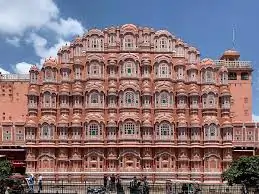
Hawa Mahal (Jaipur, Rajasthan)
The “Palace of Winds,” built in 1799 by Maharaja Sawai Pratap Singh, is one of Jaipur’s most unique architectural marvels. Designed to resemble the crown of Krishna, the five-story pink sandstone building features 953 small windows (jharokhas) decorated with intricate latticework. These windows allowed royal women to observe everyday life and festivals on the streets without being seen. The Hawa Mahal’s delicate facade and distinct shape make it one of Jaipur’s most photographed landmarks.
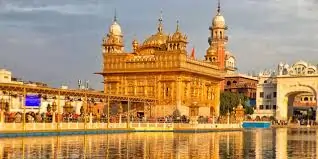
Golden Temple (Amritsar, Punjab)
The Harmandir Sahib, famously known as the Golden Temple, is the most revered place of worship in Sikhism. Its breathtaking architecture, including its shimmering gold-plated dome and marble walkways, is set amidst the sacred Amrit Sarovar (pool of nectar). Open to people of all faiths, the temple complex serves thousands of meals daily through its communal kitchen, embodying the Sikh principle of seva (service). Pilgrims and visitors alike find peace and reflection in its serene surroundings.
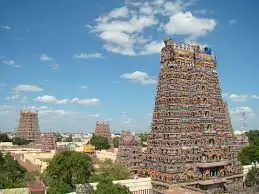
Meenakshi Temple (Madurai, Tamil Nadu)
The Meenakshi Amman Temple, dedicated to Goddess Meenakshi and Lord Sundareswarar, is a brilliant example of Dravidian architecture. Known for its towering gopurams (gateway towers), the temple is adorned with thousands of colorful, intricate sculptures depicting gods, goddesses, and mythical creatures. The temple complex is an active place of worship, attracting pilgrims and tourists for its elaborate design, sacred rituals, and vibrant atmosphere.
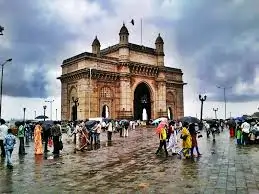
Gateway of India (Mumbai, Maharashtra)
Erected in 1924 to commemorate the visit of King George V and Queen Mary to India, the Gateway of India is a grand colonial structure facing the Arabian Sea. This iconic archway, blending Hindu and Muslim architectural styles, has witnessed significant historical events and remains a prominent landmark in Mumbai. Today, it serves as a popular gathering spot, offering a view of the bustling harbor and the nearby luxury Taj Mahal Palace Hotel.
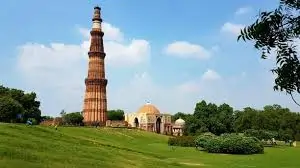
Qutub Minar (Delhi)
Standing at 240 feet, the Qutub Minar is the tallest brick minaret in the world and an excellent example of Indo-Islamic architecture. Built by Qutub-ud-din Aibak in the early 13th century and later expanded, the minaret is surrounded by ancient ruins, including the Quwwat-ul-Islam Mosque and the Iron Pillar, which has resisted rust for over a thousand years. This UNESCO World Heritage site is a testament to Delhi’s layered history and the skill of its craftsmen.
These ten places are just a glimpse into the rich tapestry of history, spirituality, and architectural brilliance that defines India. They attract millions of travelers who come to witness the blend of tradition, diversity, and heritage that make India unique.
Disclaimer
This content is for general informational purposes only, highlighting popular tourist attractions in India. While we strive for accuracy, details such as historical facts, visitor information, and cultural practices may change over time. Travelers are advised to check official sources and local guidelines for the most current information before planning their visit. This description does not replace professional travel advice, and individual experiences may vary based on season, local events, and cultural practices.
Conclusion
In summary, India’s famous landmarks provide a window into its diverse heritage, architectural marvels, and cultural richness. From the iconic Taj Mahal to the serene backwaters of Kerala, each destination offers a unique glimpse into India’s history and spirit. Visiting these places is more than sightseeing; it’s an immersion into a vibrant tapestry of traditions and stories that continue to captivate travelers from around the world.
